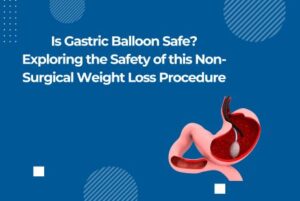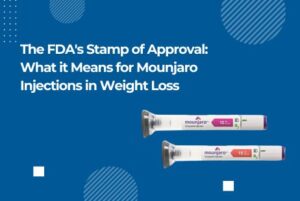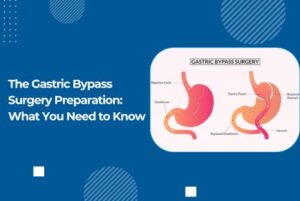Weight loss tips are a dime a dozen, but you need to be extra cautious when it comes to losing weight after gastric balloon surgery.
After all, gastric balloon surgery is a minimally invasive weight loss procedure that helps you lose weight by filling your stomach with a balloon. Maintaining the weight loss achieved when the intragastric balloon is removed is one of the trickiest parts of an intragastric balloon weight loss procedure.
However, it is essential to maintain a healthy diet and lifestyle after the surgery to maximize its benefits. This blog has compiled ten effective weight loss tips that can help you shed those extra pounds after gastric balloon surgery.
10 weight loss tips after Gastric Balloon
- Consuming enough protein
The fundamental building components of the body are proteins. The ideal weight determines the recommended daily protein intake for healthy individuals between 0.8 and 1 g/kg. Due to their crucial function in maintaining lean body mass, high-protein diets are crucial for weight management following gastric balloon surgery. This is done to protect muscle tissue and promote fat tissue reduction.
- Getting Enough Carbohydrates
Daily carbohydrate intake should be at least 50 grams to sustain good brain processes. It is intended that carbohydrate sources make up 45% of the daily calories we consume with food.
The sources of carbohydrates that should be avoided are refined sugar and carbohydrates with a high glycemic index, such as white bread and rice. Depending on the stage of the process you are in, it should be balanced with the lists under the direction of a nutritionist after the gastric balloon.
- Focus on hydration
Water is regarded as a nutrient and is necessary for life. The functions of our cells, tissues, organs, and systems for life and health, the transportation and elimination of harmful byproducts of metabolism, the regulation of body temperature, and the lubrication of joints all depend on water and other beverages.
- Adequate Intake of Fibre
The high fiber content of vegetables, fruits, legumes, and whole grain products makes them excellent sources of carbs. In addition to guaranteeing digestive movement, fiber helps control blood sugar levels and prevents obesity.
- Speed of chewing food
It takes a specific amount of time after food enters the stomach before satiety sets in. If someone eats too quickly, they will eat a lot of food before they feel satisfied. In addition to taking up space in the stomach, gastric balloons limit food intake. People will, however, eat as much as they need if it is eaten slowly and with chewing since it gives them the impression of being full.
- Solid-liquid separation
By pushing the volume of the stomach, a combination of solid and liquid foods can raise the pressure on the gastric balloon and hasten the rate at which food is digested. Because of this, drinking liquids with meals should be avoided to preserve the feeling of fullness and tolerate the gastric balloon. Instead, liquids should be had at least 30 minutes before or after the meal.
- Limiting the Intake of Liquid Calories
Alcohol, drinks containing simple sugar, and carbonated beverages should be avoided because of their high-calorie content and unfavorable effects on stomach pH.
- Upping physical activity and mobility
Physical exercise is a crucial component of weight loss programs to manage weight, maintain appropriate body weight, and avoid weight gain. For this reason, frequent exercise and a balanced diet are crucial. Sporting activities are safe to pursue after the gastric balloon.
- Change in Lifestyle
It is well known that individuals typically apply for weight loss procedures like gastric balloons after failing to lose weight numerous times. Here, it’s crucial to identify the approaches utilized, their success rate, the amount of weight lost, the causes of weight gain once again, or, if unsuccessful, the reasons.
Identifying and managing issues that may make weight loss difficult or lead to weight gain is important.
- Consistent Follow-Up and Communication
Patients should be examined, followed, and educated by a multidisciplinary team due to the complexity of obesity, numerous criteria, and the significance of lifestyle modification after surgery.
A professional physician and dietician should assess applicants while still in the pre-application stage. When communication is broken off, and frequent follow-up is not provided, it becomes apparent that these patients/clients cannot make the necessary lifestyle changes, which prevents them from getting the intended results.
These ten weight loss tips are a great starting point for anyone who has undergone gastric balloon surgery and wants to achieve their weight loss goals.
However, it’s important to remember that every person’s weight loss journey is unique, and finding the best approach for you may take time.
Work closely with an expert to create a personalized weight loss plan that fits your needs and lifestyle.
Consult Dr. Girish Juneja for expert guidance on Gastric Balloon weight loss tips
With patience, persistence, and a commitment to a healthy lifestyle, you can achieve your desired weight loss results and enjoy a happier, healthier life.
If you’re considering gastric balloon surgery or need further assistance, don’t hesitate to consult Dr. Girish Juneja, a renowned bariatric surgeon who can help guide you on your weight loss journey.
Get a quick consultation here!

Dr. Girish Juneja

Dr. Girish Juneja
Related Posts








